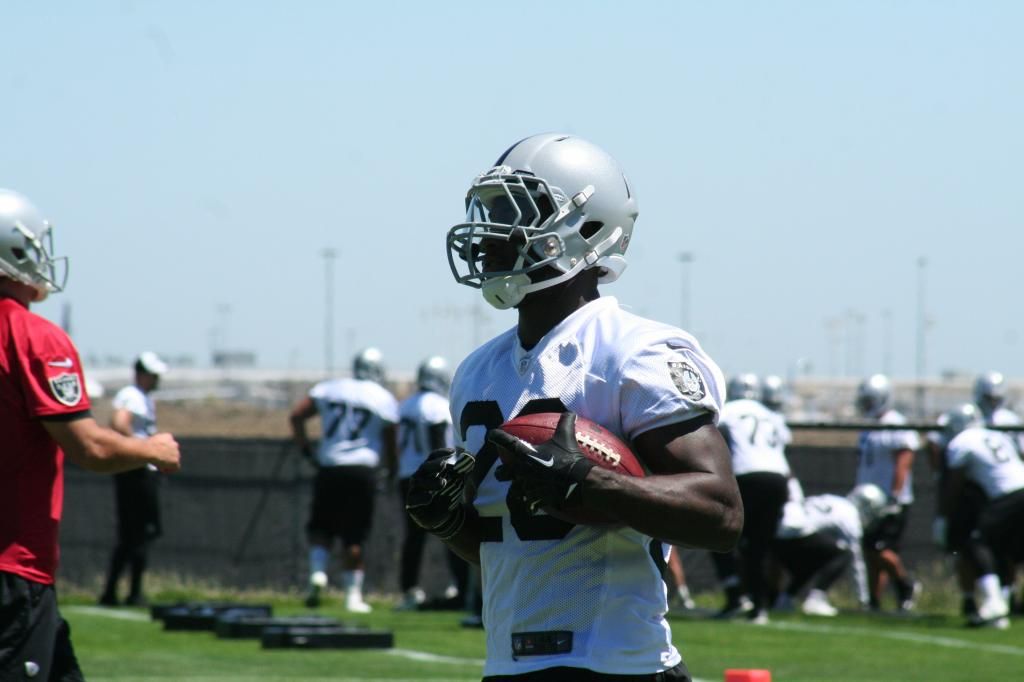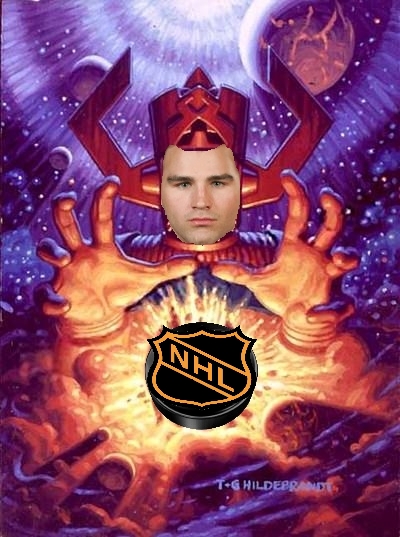This is the fifth piece in a series that will look at each position – the additions, subtractions, and pre-training camp depth chart as I see it.
For the wide receiver corps, click here. For the tight end corps, click here. For the offensive line, click here. For the quarterbacks, click here.

The Raiders’ run game was almost historically bad last season, averaging only a paltry 77.5 yards per game over the course of the regular season. They were the only team that failed to hit at least 80 yards per game in the NFL and one of only nine teams who failed to hit at least 100 yards per game.
In fact, there were six individual rushers who ran for more yards per game in 2014 than the Raiders were able to accomplish as a team: Baltimore’s Justin Forsett (79.1 yards per game), Seattle’s Marshawn Lynch (81.6), Philadelphia’s LeSean McCoy (82.4), Pittsburgh’s Le’Veon Bell (85.1), Houston’s Arian Foster (95.8), and Dallas’ DeMarco Murray (with a whopping 115.3 yards per game on average).
Were it not for the late-season emergence of Latavius Murray as a viable running option, the Raiders might have “achieved” an even worse yard per game average but over the last few games of the season, Murray worked his way into the starting position and ran for 424 yards on only 82 carries, achieving an average of 5.2 yards per carry on the season.
That 5.2 ypc average well exceeded the average of the two veteran running backs on the team who were expected to carry the load in 2014, Darren McFadden and Maurice Jones-Drew.
McFadden, who left the team for Dallas this offseason, averaged a disappointing 3.4 yards per carry in 2014 but that average looked fantastic compared to Jones-Drew’s 2.2 yards per carry average on the year. Jones-Drew has since retired this off-season.
Latavius Murray will go into training camp as the man to beat for the starting position and I don’t see anyone who will win out over him on the roster at this point. Murray is still a relatively unknown commodity, having suffered a season ending injury before playing as a rookie in 2013 and then only working his way into a serious role late in the 2014 season. As stated earlier, he ended with only 82 carries in 2014 and that begs the question as to whether he is physically able to take an NFL pounding and remain healthy.
There isn’t much option for the team at this point than to try him as a starter and hope, however. GM Reggie McKenzie was active in trying to upgrade him this offseason, attempting to recruit prize free agent RB DeMarco Murray and having interest in Vikings’ Pro-bowl rusher Adrian Peterson had Minnesota cut him.
McKenzie did sign veterans Roy Helu and Trent Richardson as well as undrafted rookie Michael Dyer and the team decided to convert Taiwan Jones from cornerback back to running back. Those four join Murray and George Atkinson III to fill out the running back corps at this point.
The addition of Helu is particularly intriguing as a change of pace and third-down option to spell Murray. Helu had about half as many carries as Murray – only 40 in the 2014 season – but he did very well with them, averaging more than Murray, even, at 5.4 yards per carry.
Helu also added 42 receptions for 477 receiving yards in 2014 – an impressive 11.4 yards per reception average. To put that into some perspective, that’s the exact same yards per reception that tight end Julius Thomas achieved in 2014 with Thomas with one more reception on the year, ending with forty-three.
Helu projects well as the backup to Murray and a third-down receiving option but if Murray is not able to play due to injury, Helu is not an ideal workhorse-style running back. The last time Helu was called upon to start games and carry a team was his rookie year and although he acquitted himself fairly well, it isn’t the best way to use him.
Ideally, the team will give Murray something around 20 carries per game and Helu around 10 per game and use them both in tandem to head an effective rushing attack in 2015.
Behind Murray and Helu, the position lacks depth. Taiwan Jones, technically listed a running back, has a role as a special teams specialist only. If Atkinson III makes the final squad this season it will likely be for a similar reason, his ability as a returner on Special Teams, not his play as a running back.
The team signed former first rounder Trent Richardson and seem to think he has more quickness than he’s shown in years. As bad as Darren McFadden was for the Raiders last year at 3.4 yards per carry, Trent Richardson was even worse for the Colts managing only 3.3 yards per carry on average with a better quarterback helping to open up running lanes.
An interesting additional option is undrafted rookie Michael Dyer who once looked like a star at Auburn (he broke the rookie rushing record at Auburn, previously held by Bo Jackson!) before washing out due to drug and other disciplinary issues. He ended up transferring to Arkansas State, was dismissed following an incident with the police, worked his way back to division 1 football to Louisville via Arkansas Baptist College, and is now trying to show that he has put his checkered past behind him.
I am not a believer in Trent Richardson and Michael Dyer is a big unknown but it seems likely that one of them will make the team as the third running back on the squad with Taiwan Jones also making the final 53 as a running back in name, only.
The position has some talent but like many of the positions on the team, it’s overly top-heavy and lacks the depth the team would like to have. Still, for the first time in many years, the team will not have to worry about relying on the under-whelming Darren McFadden – he is Dallas’ concern, now.
Instead the team can go in with some optimism that Murray is a star-in-the-making and Helu is as good as his yard per carry and per reception numbers indicate.
The off-season is always the time for optimism. This year, the optimism may actually get borne out.
Add The Sports Daily to your Google News Feed!
